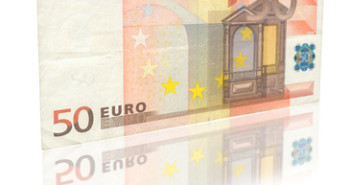EUR/USD is steady as we begin the new trading week. The pair is trading slightly above the 1.35 line in Monday’s European session. The euro took a tumble last week, shedding about 300 points against the US dollar. In economic news, Spanish Manufacturing PMI almost matched the estimate, while Italian Manufacturing PMI fell short of expectations. Over in the US, the only items on the schedule are Factory Orders and appearances by two Federal Reserve policymakers.
Here is a quick update on the technical situation, indicators, and market sentiment that moves euro/dollar.
EUR/USD Technical
- In the Asian session, EUR/USD was steady, but dipped to a low of 1.3442 before recovering, The pair consolidated at 1.3496. In the European session, EUR/USD has crossed above the 1.35 line.
- Current range: 1.3500 to 1.3570.
Further levels in both directions:Â 
- Below: 1.3500, 1.3460, 1.3415, 1.3325 and 1.3240, 1.3175, 1.31, 1.3050 and 1.3000.
- Above: 1.3570, 1.3650, 1.3710, 1.3800, 1.3870 and 1.3940.
- 1.3500 is fluid and is providing weak support. 1.3460 is next.
- 1.3570 is the next resistance line. It is followed by 1.3650.
EUR/USD Fundamentals
- 8:15Â Spanish Manufacturing PMI. Exp. 51.0, Actual 50.9 points.
- 8:45Â Italian Manufacturing PMI. Exp. 51.1, Actual 50.7 points.
- 9:00Â Eurozone Final Manufacturing PMI. Exp. 51.3, Actual 51.3 points.
- 9:30Â Eurozone Sentix Investor Confidence. Exp. 6.6 points.
- 15:00 US Factory Orders. Exp. 1.9%.
- 15:00 US Factory Orders (Aug. Data). Exp. 0.2%.
- 16:40 US FOMC Member Jerome Powell Speaks.
- 21:00 US FOMC Member Eric Rosengren Speaks.
* All times are GMT.
For more events and lines, see the Euro to dollar forecast.
EUR/USD Sentiment
- Euro drops below 1.35: The euro had a dismal week, losing around 300 points and closing the week below the 1.35 line. Euro to dollar forecastThis is well below the ECB’s inflation target of 2.0%. The FOMC statement, which was less dovish than expected, also weighed on the euro. The currency has dropped to six-week lows against the dollar, and speculation is growing that the ECB could cut rates in order to boost growth, perhaps as early as this week. The ECB meets for a policy meeting on Thursday, and the possibility of a rate cut could lead to some volatility from the euro during the week.
- Fed keeps QE tap open: The Federal Reserve wrapped up a policy meeting on Wednesday, the first meeting since Congress hammered out an agreement on the debt ceiling and reopened the government. As expected, the Fed said that it would maintain QE at current levels of $85 billion each month. However, the policy statement was less dovish than expected, as the Fed said that the economy was expanding “at a moderate pace†and left the door open for tapering in December. However, most markets analysts are of the view that short of a sharp improvement in US data, QE tapering will be on hold until early 2014.
- US numbers improve late in the week: After a host of weak numbers early in the week, US numbers showed some improvement. Unemployment Claims practically matched the forecast, and ISM Manufacturing PMI beat the estimate. With the Fed unlikely to taper QE before 2014, the QE uncertainty which was has been weighing on the dollar has eased, and the dollar could continue to hammer away at the retreating euro.
- Weak German numbers point to slowdown: German releases did not look sharp last week. On Thursday, Retail Sales posted its third decline in four releases, and Consumer Climate and Import Prices both fell short of their estimates. Earlier this week, German Unemployment Change came in at 2 thousand in September, just above the estimate of 1 thousand. Although this was a respectable reading, it was the indicator’s third consecutive increase, raising concerns that the German economy is slowing down. The jobless rate was unchanged at 6.9 percent. If the Eurozone is to remain out of recession, it can ill afford for Germany, the region’s number one economy, to slow down.
- Will ECB cut rates? With the Eurozone continuing to post weak inflation numbers, the ECB will be giving serious consideration to lowering rates. Eurozone CPI fell to 0.7% in September, well off the ECB inflation target of 2.0%. With rates already at a record low of 0.50%, a cut of 0.25% might not have much impact. Other tools available to the ECB include a new LTRO or introducing a negative deposit rate.



